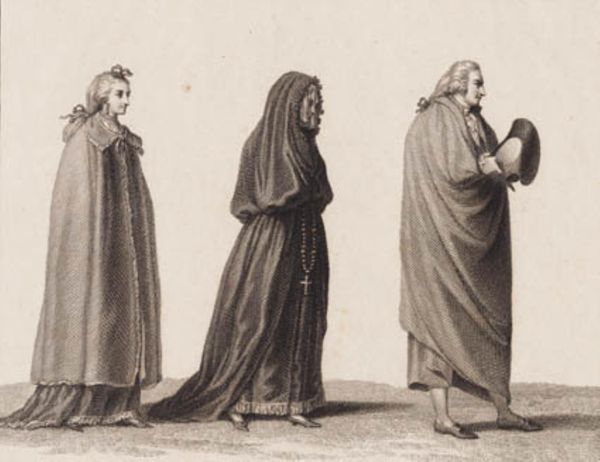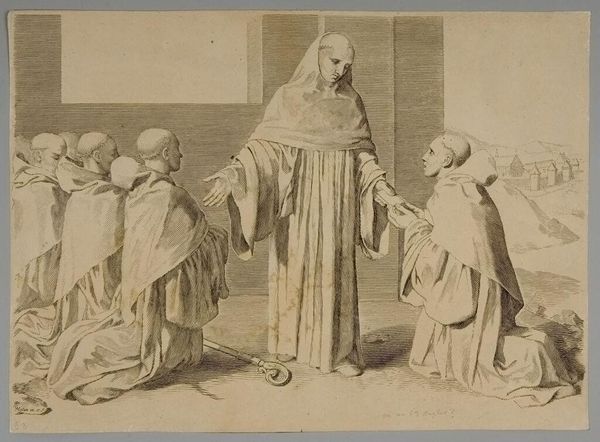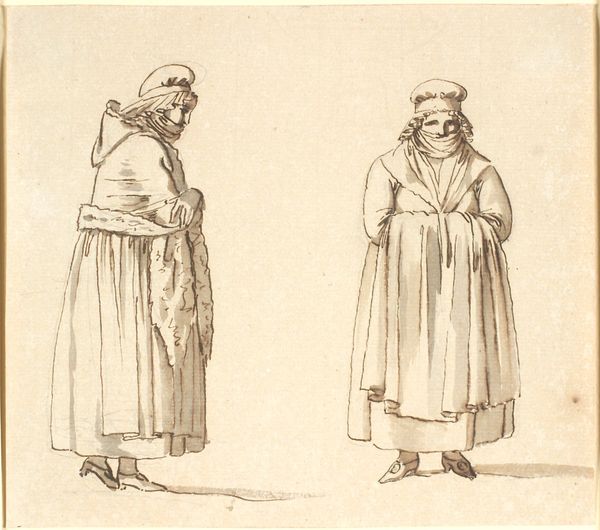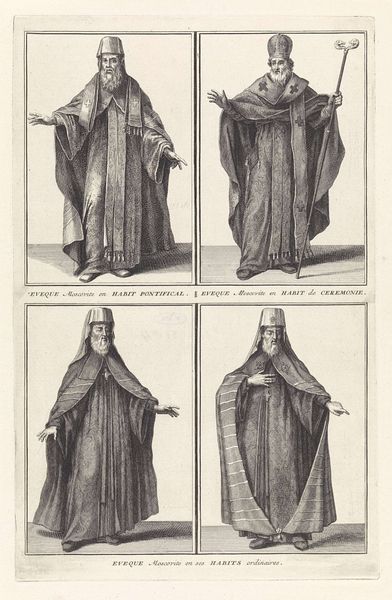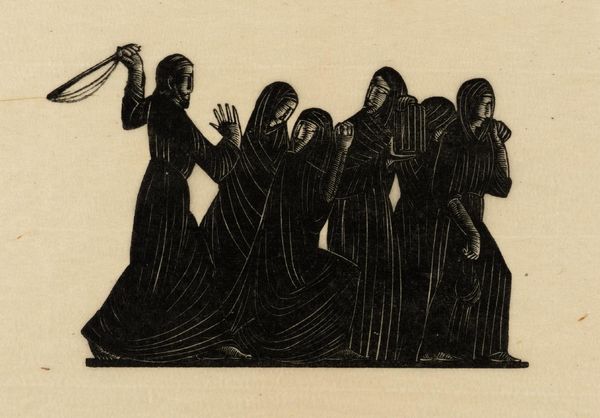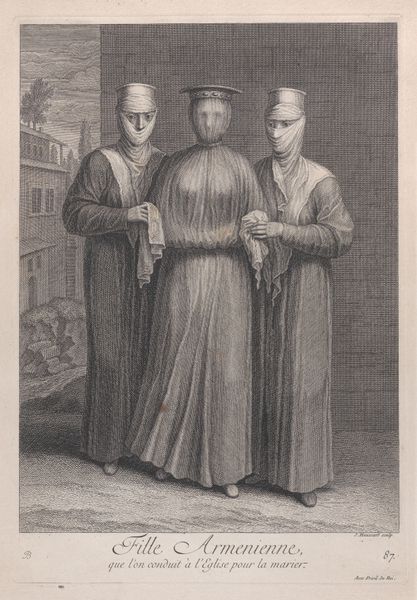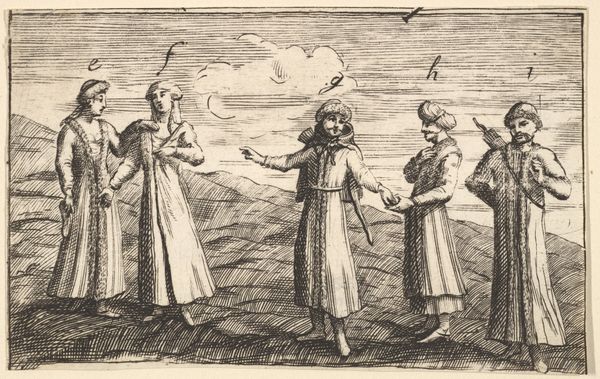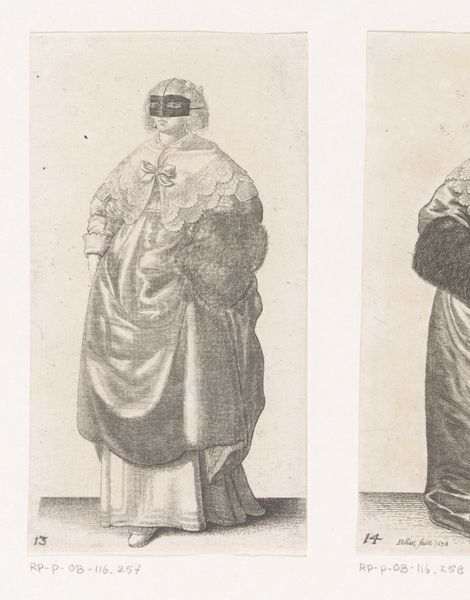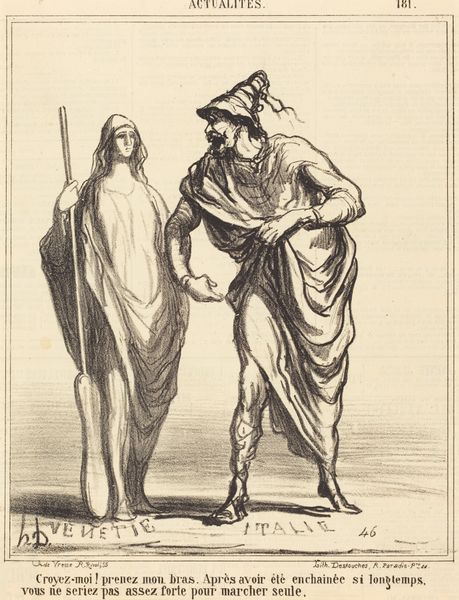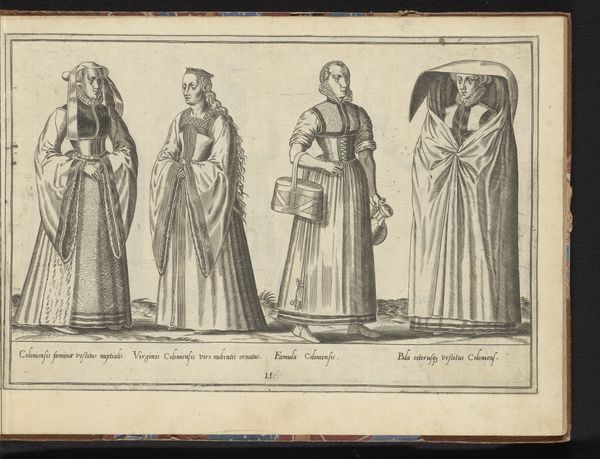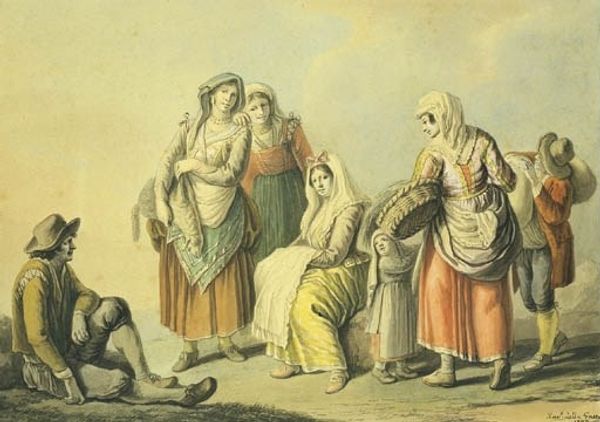
Tre portugisere. Anvendt i J. Murphy: 'Travels in Portugal. 1789-90' 1795
0:00
0:00
print, etching, engraving
#
portrait
#
neoclacissism
# print
#
etching
#
genre-painting
#
engraving
Dimensions: 230 mm (height) x 241 mm (width) (bladmaal), 199 mm (height) x 273 mm (width) (plademaal), 132 mm (height) x 190 mm (width) (billedmaal)
Curator: Let's explore this 1795 print titled "Tre portugisere. Anvendt i J. Murphy: 'Travels in Portugal. 1789-90'" by J.F. Clemens, held here at the Statens Museum for Kunst. It's an engraving, etching, a genre painting and a portrait, all rolled into one intriguing composition. Editor: My initial reaction is one of muted curiosity. There’s a somber tone to this image. It presents three figures in period dress; their garments almost seem to cloak them in an air of secrecy and historical weight. I find my attention drawn towards the contrasting textures implied in the rendering of their clothes. Curator: Yes, Clemens captures a distinct moment in the social fabric of the time. Consider how clothing was itself a signifier—a silent language communicating identity, status, and even political affiliation. Look at the figure on the left, for instance: the aristocratic hairstyle coupled with a simple cape speaks volumes about societal norms and expectations, wouldn't you agree? Editor: Indeed. And what fascinates me is how these visual symbols intertwine. The rosary carried by the figure in the middle has its obvious religious connotations, but the way they shroud themselves seems to suggest the role of the church and the weight of its power at that historical moment. Is it oppressive or protective? The imagery is ambiguous. Curator: Exactly, the layers of meaning! It's vital to contextualize this image within Neoclassicism and the Age of Enlightenment, even, a time when notions of personal liberty were clashing with established hierarchical systems. These figures become emblems of the conflicts inherent in those eras. Editor: From an iconographic perspective, the limited color palette of this print – almost monochrome – adds to this feel. Black and white heightens the symbolic gravity, imbuing these three anonymous individuals with timeless importance. Curator: A sense of enduring relevance… which leads us back to us, as viewers today. How do we relate to representations of gender, power, and piety depicted centuries ago? What echoes persist in our modern era? Editor: In engaging with this print, we aren't just witnessing history but acknowledging its layered influences within our ongoing cultural narrative. Curator: Precisely! Understanding where we've been allows us to be critically aware of the paths we carve moving forward.
Comments
No comments
Be the first to comment and join the conversation on the ultimate creative platform.
